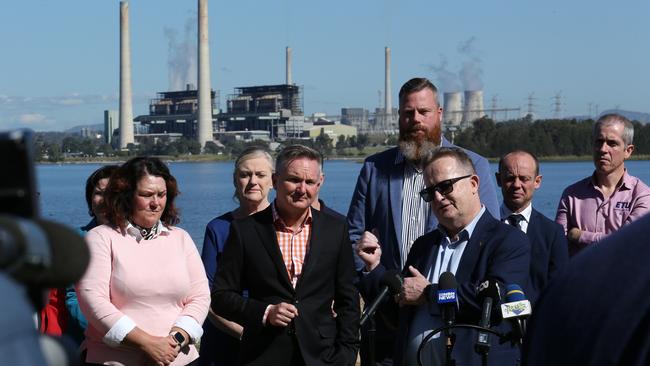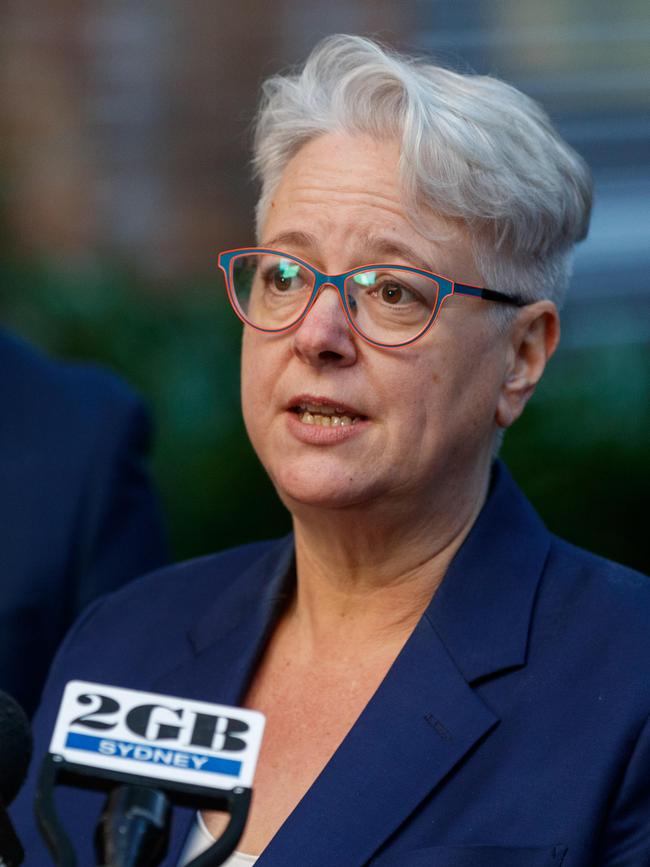This Christmas it’s hard to find any tidings of comfort and joy for Energy Minister Chris Bowen


Liquid fuel generators were turned on in Townsville, batteries were drained in South Australia and sluice valves were released in the Snowy Mountains to ramp up output from the turbines.
NSW Energy Minister Penny Sharpe implored households to ease the strain by delaying the start of their dishwashers, dryers and washing machines.
The Australian Energy Market Operator needed to find 690MW of spare capacity in case the largest generation source in NSW should crash. By 5.30pm, however, it had only managed to muster 678MW.
At 1800 hours and 52 seconds, AEMO hit the panic button and issued an Actual Lack of Reserve Level 2 notice for NSW, the highest category of alert short of an actual blackout.
In summary, the electricity grid in an economically sophisticated First World capital was on the brink of collapse on a hot day for the want of a miserly 12MW of power.
When the Liddell Power Station in the Hunter Valley was decommissioned in April, we were assured everything would be fine. AEMO executive general manager of system design Merryn York said NSW would meet reliability measures until at least 2025, thanks to “a strong pipeline of proposed generation and storage projects”.
Federal Energy Minister Chris Bowen said AEMO had advised him that “the closure of Liddell can be absorbed into the system without any disruption or threats because of all the dispatchable renewables that have come on in recent times”. Thursday’s incident shows he was misled.
AEMO data shows NSW has fallen about a gigawatt short of meeting the demand for electricity just about every day of the week. In other words, the state consumes more electricity than it can generate. Like a once respectable gentleman sitting outside the station with a hand stretching out from a torn and dirty sleeve, NSW is obliged to scrounge what power it can from Victoria and Queensland.
Yet less than 24 hours after NSW electricity consumers were asked to turn off their pool pumps to stop the grid collapsing, it was as if nothing had happened. AEMO on Friday issued a revised road map for zero 2050. It forecasts coal-fired power stations will shut down at an even faster rate. It predicts half the current capacity of coal-fired power will disappear over the next eight years; some 90 per cent will be gone by 2040.

No worries, says Bowen. The government is committing to spend whatever it takes to attract more investment in renewables. “Firmed renewable energy is not just clean; it’s the cheapest way to ensure a reliable grid,” Bowen insisted in a press release.
The revised road map in AMEO’s draft 2024 Integrated System Plan is 87 pages of wishful thinking. Australia’s energy market planners are gripped by baseload denialism, the delusion that if you connect enough wind turbines and solar panels, things will be just fine. Yet when the grid comes under pressure, as it did in NSW last week, the truth emerges.
For all its supposed expertise, AEMO has yet to persuade the sun to remain comfortably above the horizon for more than 12 hours a day in mid-December. Nor has it convinced the wind to blow more consistently or the clouds to stop casting shadows over silicon-covered suburban rooftops at inconvenient moments.
AEMO’s revised plan demands tripling the amount of industrial-scale wind and solar power in the east coast grid by 2030. That’s a mere six years away, in case anybody hadn’t noticed. To get there we’ll need to connect about 6GW of new variable renewable energy to the grid every year.
Yet the Clean Energy Council reports investment in the September quarter was the fourth-lowest since it began tracking project data in 2017.
The total capacity of grid-scale renewable energy projects that gained financial commitment in the first three quarters of 2023 was just 509MW, around a 12th of what AEMO’s plan requires.
AEMO’s plan requires quadrupling firmed renewable energy capacity by 2030 using utility-scale batteries, hydro and quick-start gas generation.

This motley collection of dispersed generators and storage devices must not only be built in record time but connected via the 10,000km of new transmission lines AEMO says we must install by 2050. All this must happen before the coal generators disappear. It won’t, thanks to the iron law of renewable energy infrastructure, which dictates that timelines will be considerably longer and the cost much larger than forecast.
Snowy Hydro’s gas plant at Kurri Kurri was supposed to plug the gap left by Liddell. It was forecast to go online this month at a cost of $600m. In August, Snowy Hydro increased the cost forecast by 58 per cent and pushed out the completion date for another year. That assumes the Australian Pipeline Association manages to get its act together and install a 21km lateral extension to the Sydney-Newcastle trunk pipeline.
As Ted Woodley pointed out in these pages last month, the pipeline is expected to cost another $450m, which, added to the ballooning cost of building storage for the plant, pushes the total cost towards the $1.5bn mark.
The bottom line is that the great energy transition, which looked so good on the spreadsheets, is turning into a chaotic, multifaceted omni-shambles on an unprecedented scale.
Billions of dollars of capital that could have built roads, schools and hospitals, or been productively invested in profitable businesses, have been grievously misallocated into projects that are neither economically nor technically feasible.
Capital is becoming scarcer, and the appetite for increasing risk is diminishing. Taxpayers will be obliged to provide a larger share of the investment either directly or by underwriting loans.
In this season of goodwill, it is hard to find tidings of comfort and joy to offer the Energy Minister. Yet there is at least the merest hint of light at the end of the tunnel with news the Snowy Hydro boring machine is moving again after being bogged in rugged terrain for more than a year. With 150 metres dug, there’s just 14.85km to go.






For a delicate 30 minutes late last Thursday afternoon, the NSW electricity system went through a near-death experience.